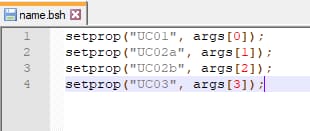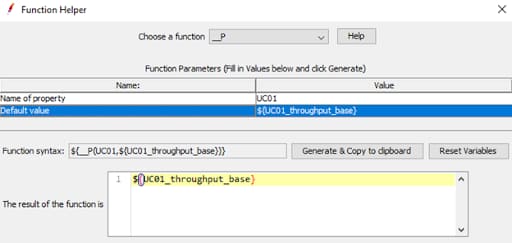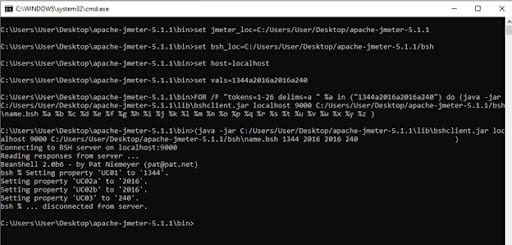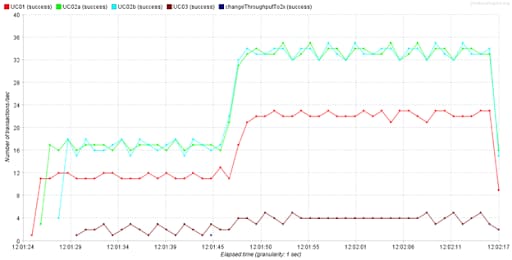JMeter. Changing intensity with Constant Throughput Timer
In JMeter, it is no longer possible to change the intensity, the number of threads and the duration of the test by standard methods after starting the test. However, it happens that the test is already running, but you urgently need to change a parameter (for example, I often forget to indicate the test duration), for which you need to stop the test, set database to the initial state, reboot the cluster, pull the original git commit and so on. Solution: configure and run BeanShell Server. With the help of BeanShell Server one can “play” with the following settings. Let’s illustrate it on the example of intensity change.
Variables
jmeter_loc – the full path to the root jmeter folder
host, port – jmeter’s host and port for the machine, where it is running
bsh_loc – folder, containing bsh-files
new_throughput – new intensity value, op/min
old_throughput – default intensity value, op/min
JMeter configuration and start from the command line
Explanation
In the line «java –jar %jmeter_loc%\lib\bshclient.jar %host% %port% %bsh_loc%\name.bsh %new_throughput%» we call bshclient and indicate, which host and port are opened to the bsh-server, as well as which bsh-script needs a new parameter.
Example solution for a maximum search test
The project profile consisted of 20+ operation, so changing each intensity change manually is not fun. We wanted to find a maximally scalable and parametrized solution, which would allow us to use it for different projects with a different operation amount and from different loading machines.
Let’s illustrate it on the example of intensity change.
In the end we’ve written a “universal” .bat-file to change intensity,
where vals-line contains new intensity values, separated by letter “a”.
name.bsh:
In JMeter load test scenario we add a separate thread group and in it – jsr223-sampler. Constant timer is added to the thread group and the intensity change is fired by it. Base intensity values for each iteration are saved in User Defined Variables.
Function Helper explains, how to use intensity values syntax in Target Throughput.
After the .bat-file has been executed, the command line stays open, so we see that the intensity values have successfully been changed.
And that the command has looked like that:
java -jar C:/Users/User/Desktop/apache-jmeter-5.1.1\lib\bshclient.jar localhost 9000 C:/Users/User/Desktop/apache-jmeter-5.1.1/bsh\name.bsh 1344 2016 2016 240We observe the intensity change in Transaction per Second:
The intensity has been doubled.
Conclusion
Using the described approach, you can increase and reduce intensity, thread amount and test duration, which saves time and helps to choose the optimal load options.
Related insights in blog articles
Essential Guide to ITSM Change Management: Processes, Benefits, and Tips

ITSM change management is essential for managing and implementing IT changes smoothly. It focuses on minimizing risks and aligning changes with business goals. In this guide, we’ll explore what ITSM change management entails, discuss its benefits, and provide practical tips for implementation. Key Takeaways What is ITSM Change Management? ITSM change management is a key […]
SRE Roles and Responsibilities: Key Insights Every Engineer Should Know

Site Reliability Engineers (SREs) are crucial for maintaining the reliability and efficiency of software systems. They work at the intersection of development and operations to solve performance issues and ensure system scalability. This article will detail the SRE roles and responsibilities, offering vital insights into their duties and required skills. Key Takeaways Understanding Site Reliability […]
Understanding Error Budgets: What Is Error Budget and How to Use It

An error budget defines the allowable downtime or errors for a system within a specific period, balancing innovation and reliability. In this article, you’ll learn what is error budget, how it’s calculated, and why it’s essential for maintaining system performance and user satisfaction. Key Takeaways Understanding Error Budgets: What Is Error Budget and How to […]
Mastering Reliability: The 4 Golden Signals SRE Metrics
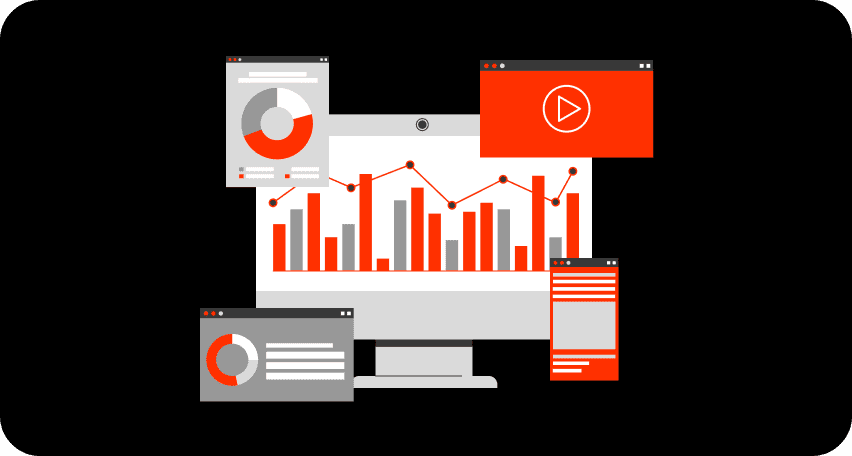
Introduction to Site Reliability Engineering Site Reliability Engineering is a modern IT approach designed to ensure that software systems are both highly reliable and scalable. By leveraging data and automation, SRE helps manage the complexity of distributed systems and accelerates software delivery. A key aspect of SRE is monitoring, which provides real-time insights into both […]
Be the first one to know
We’ll send you a monthly e-mail with all the useful insights that we will have found and analyzed
People love to read
Explore the most popular articles we’ve written so far
- Benefits of Performance Testing for Businesses Sep 4, 2024
- Android vs iOS App Performance Testing: What’s the Difference? Dec 9, 2022
- How to Save Money on Performance Testing? Dec 5, 2022
- Cloud-based Application Testing: Features & Types Apr 15, 2020

